|
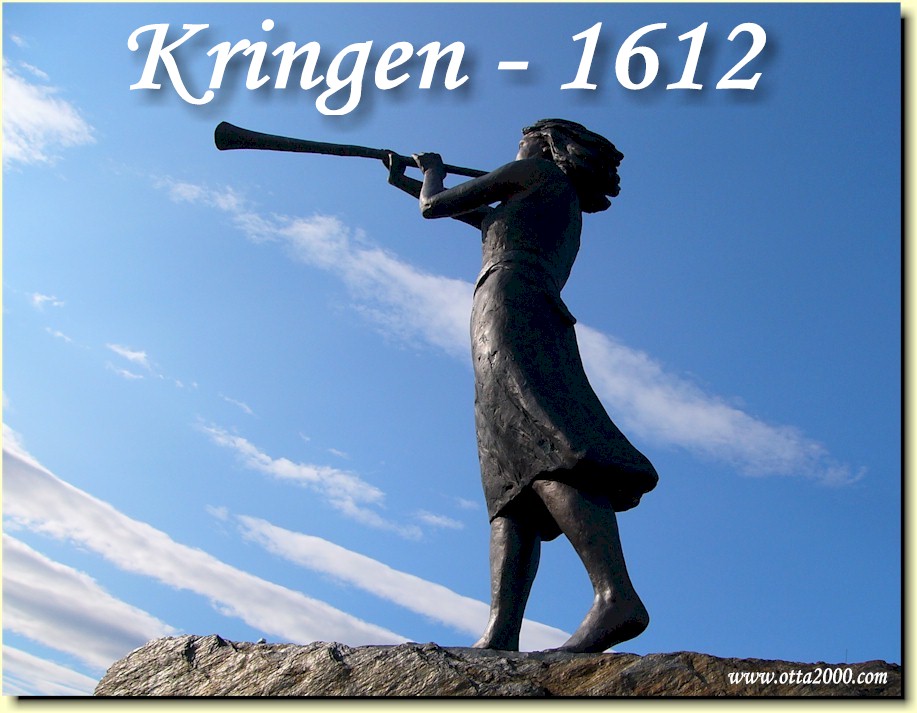 |
| |
 |
Translation
into English by
Norman Henderson |
 |
|
| |
|
|
|
|
| |
Web:
Geir Neverdal (lektor/cand.philol) - Sel Historical
Society |
|
| |
|
|
|
|
|
|
|
|
|
|
Myths and
Legends? |
| |
|
|
|
|
|
|
|
|
|
| |
|
|
|
Background - The
Battle - Myths?
- Significance - Objects - Literature - Scotland
-
Programme2012 |
| |
|
|
| |
|
|
| |
|
|
| |
|
|
| |
“The bloody end to The Scottish March at Kringen is
one
of the occurrences in older Norwegian military
history most
shrouded in mystery and myth”.
(“Defence from
Leidang to total defence” by Ersland, Bjørlo,
Eriksen and Moland).
|
|
| |
|
|
| |
Contents of this page: |
|
| |
|
|
|
| |
Pillarguri?
What does Krag write about Pillarguri?
What do others write about Pillarguri?
Pillarguri or Prillarguri?
Lur or horn?
Was
Pillarguri a historical person?
The tales about “The
Mermaid” and weather calves
The timber avalanche
|
Berlin 1998
Kjell Fjerdingren
Lady
Sinclair
What happened to the surviving
Scots?
The Scot in
Gjerstad
The Scot who was saved by Ingebrigt Valde
|
|
| |
|
|
| |
Pillarguri? |
|
| |
|
|
| |
It is
difficult to distinguish between fact and fiction when
dealing with information handed down by word of mouth. (Snorre,
for example, based his works for the most part on
verbally transmitted
information, and much of what we read there today we
accept as being a factual description).
Today we can - with our knowledge - see that some of
what is told must be fiction. On other occasions there
can be a factual basis for what is told.
It is particularly difficult when what is being
recounted happened at a time when few contemporary
written sources existed.
The tale of
Pillarguri and her role in the battle at Kringen has
nevertheless made a strong impression on a great many
people - and she is one of the few characters in
Norwegian history known to large
groups of the population, and with whom they can
identify. She also became one of several symbolic
figures at the time of the dissolution of the Union with
Sweden in 1905.
It was not by chance that 83 emigrants from
Gudbrandsdalen in 1906 - one year after Norway became a
Sovereign state - gathered in Minneapolis to found a
Society, the main objective being to collect funds for a
new monument at Kringen. The symbol chosen was naturally
Pillarguri.
Nor was it by chance that it was King Haakon VII who
unveiled this Monument at the 300th. Anniversary in
Kringen in 1912. The Prime Minister was also present.
The symbolic value has been - and is - considerable. |
|
| |
|
|
| |
|
|
|
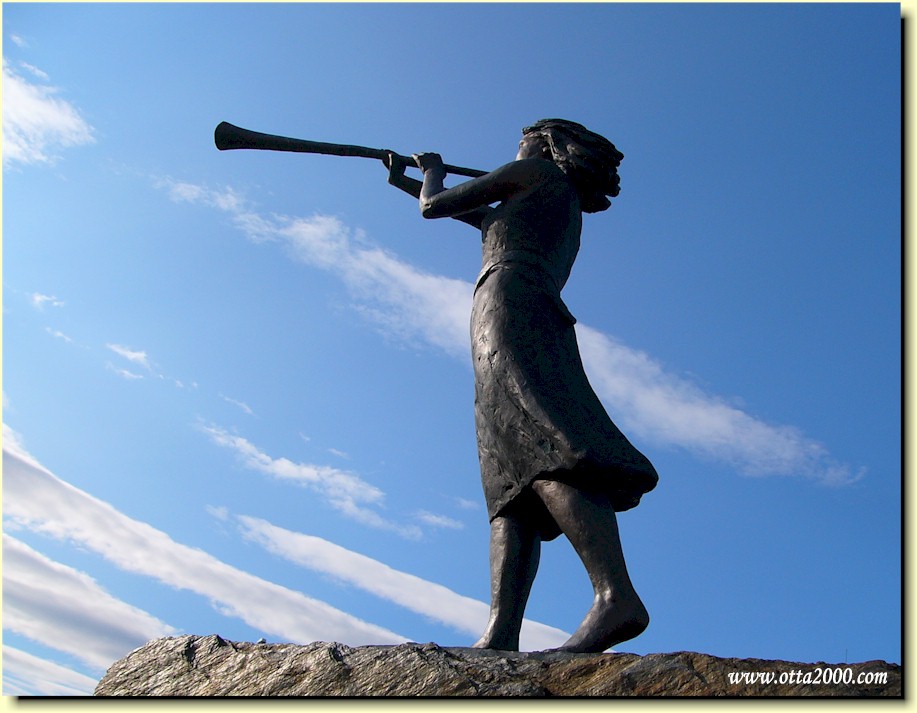 |
| |
|
|
| |
Angell
writes: |
|
| |
There was a girl in the village called Gudrid. She
was such an accomplished player of the
lure
and buckhorn (bukkehorn)
that she was given the name Prillar-Gudrid. She has
been much spoken of after that day and has become
etched in everyone’s memory”.
|
|
| |
The farmer at Storøya was not the only one who was
to give the signal. To be certain that everybody
knew the exact moment at which to act, that everyone
in the woods should be able to see the signal
clearly, a signal from Seljordkampen (Pillarguritoppen
- author’s note) should be made. Prillar-Gudrid
should hang a white cloth - some mean a length of
white woven wool material - over the sheer cliffside.
As the Scots advanced she would allow this woven
wool material to unroll showing the farmers how far
the Scots had come. The longer the piece of
material, the closer the Scots were. When she saw
the farmer on the white horse turn back quickly, she
should let the cloth fall. - Everybody should be
able to see that signal; nobody could hold back
then.
(It is also said that she had the cloth wound round
her arm and she should shorten it as the Scots
marched forward).
It was a double signal; a modern form of “semaphore”
if you will. Brilliantly thought out.
|
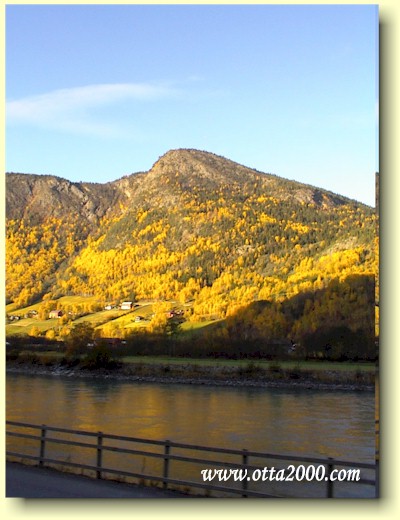
Pillarguritoppen
seen from a little north of Kringen. |
|
| |
|
|
|
| |
Many are also of the opinion that Prillar-Gudrid
should give the signal by playing a tune of her own
or a folk tune on the lure. In most people’s minds
this seems to be the case....
The image of the girl stood up there in the minds of
the dalesmen for a very long time - as she will
continue to do in the minds of all Norwegians in
times to come.
But Prillar-Gudrid had another task besides giving
signals. The leaders were afraid that the Scots
should find out about the ambush - because then the
battle would in all probability be lost.
|
|
| |
There are a number of stories about individuals who
took part in the Battle of Kringen and they should
be mentioned. First of all there is Prillar-Gudrid
(Pillarguri). She blew her lure for a long time
during the Battle, but when she saw that the river
Laagen became coloured red with blood she threw away
her lure, lay down and wept.
(Angell pp.64)
|
|
| |
|
|
| |
|
|
| |
|
|
| |
What does Krag
write about Pillarguri? |
|
| |
(Coming later)
|
|
|
| |
|
|
| |
|
|
| |
What do
others write about Pillarguri? |
|
| |
(Coming later) |
|
|
| |
|
|
| |
|
|
| |
Pillarguri
or Prillarguri? |
|
| |
|
|
|
|
|
Krag,
the Vågå parson, who himself lived in the district and
collected the local tales, writes in his book from
1838 about “Pillar-
Guri”:
|
|
|
|
|
|
|
|
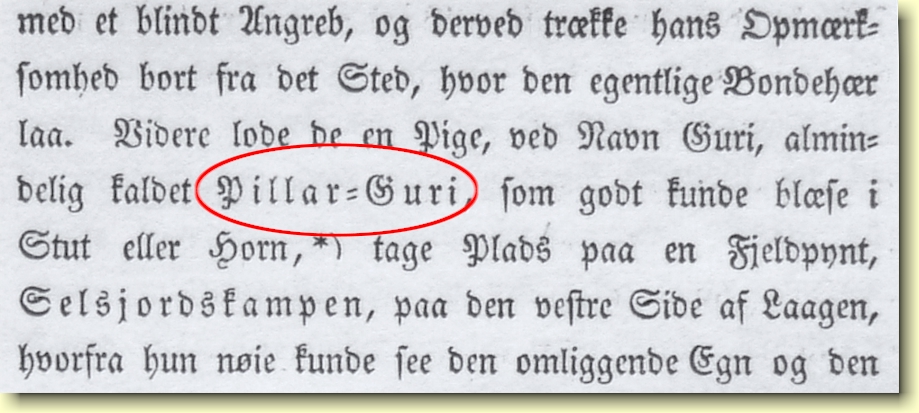 |
|
|
".. with a blind Attack, thereby taking his
Attention away from the place, where the real
Farmers' army lay. Furthermore they let a Girl, with
the Name Guri, commonly called
Pillar-Guri,
who could blow a Stut or Horn well, *) take up
position on a Mountain Peak, Selsjordskampen, on the
west Side of the Laagen, from where she could
clearly see the surrounding landscape and the ..."
|
|
|
|
Krag, 1838, page 35 |
|
|
|
|
|
|
|
|
|
|
|
|
Andreas Faye
who, apart from his periods abroad, lived all his life
in Drammen, Christiania and on Sørlandet mentions in his
book from 1833 (according to genealogist
Lars Løberg):
“...both the girl and the farmer on the horse in his
publication of Norwegian Legends in 1833. He says
here that the legend about “Ragnhild or
Prellegunhild, (Lure, Prellehorn) has been told to
me
verbally. The legend about the man on the white
Horse ... in the same way, verbally."
In other
words he calls her “Ragnhild”
or “Prellegunhild”.
Magnus
B. Landstad (1802-1880)
- uses
the name
Prillar-Guri.
It is possible that his poem was written in connection
with the 250th. Anniversary in 1862, but we know little
about this. |
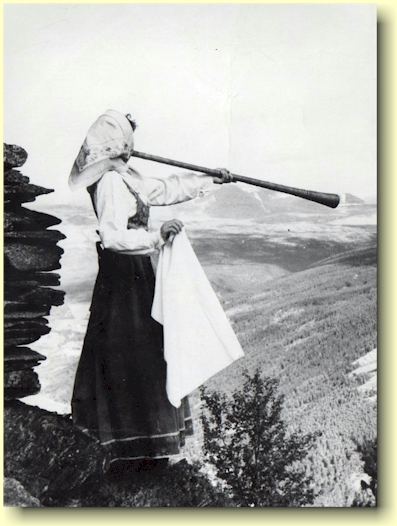
Ragnhild Glad as Pillarguri in 1962
(Thanks go to Bjørn Glad who gave us
the photo) |
|
|
|
|
|
|
|
Krag is the one who, in the 1830s, came
closest to the source of this
information - and in local tradition she was
called
Pillarguri.
|
|
|
|
|
|
| |
|
|
|
|
Lur or horn? |
|
|
| |
(Coming later) |
|
| |
|
|
| |
|
|
| |
|
|
| |
Was
Pillarguri a historic person? |
|
| |
|
|
| |
According
to local tales she was.
She occupies a strong position in the verbal tales which
Krag refers to in his writings of 1838 - and in the
account of The Scottish March she occupies a place as
part of the diversionary strategy decided
upon before the battle.
Doubt is raised from other quarters, also because she is
not mentioned in Storm’s Zinklarvisen - but neither are
Randklev, Hågå or Sejelstad.
Storm also
mentions only farmers from
“Vaage, Lessø and Lom”
in his folksong - those who came from the South, Fron
and Ringebu, and who played a major role at Kringen, are
not mentioned either.
Zinklarvisen definitely does not contain a detailed
description of what happened at Kringen.
|
|
| |
|
|
| |
According
to local tradition Pillarguri was born and grew up at
Kruke in Heidal
Pål Glad
Kruke, who owns the farm today, has given us the photo
shown below.
You may read more about Kruke and its history here:
www.kruke.net
. |
|
| |
|
|
|
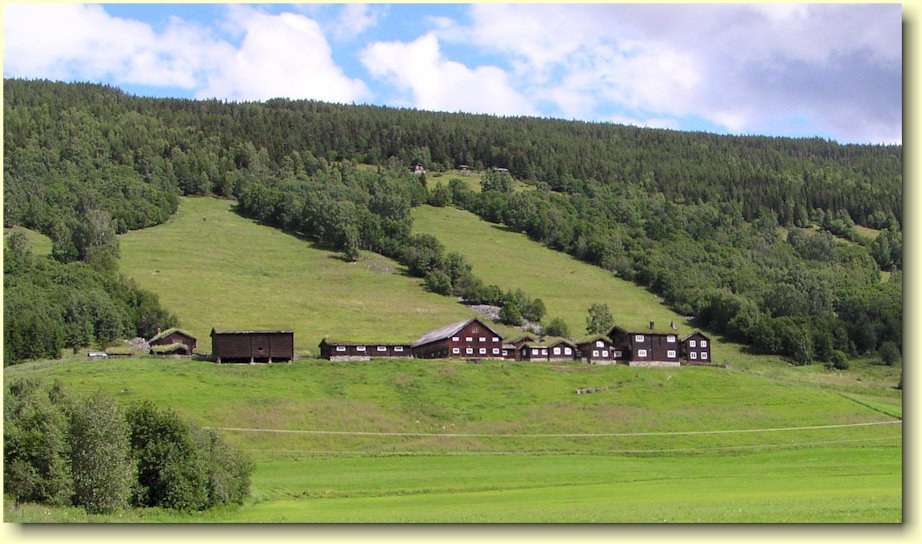
Kruke in
Heidal |
| |
(More about
this later)
|
|
| |
The
following is clear: |
|
| |
|
|
| |
The tale about Pillarguri and her role in the
battle at Kringen has made a strong impression
on a great many people - and she is one of the
few characters in Norwegian history known to
large groups of the population and with whom
they can identify.
She also became one of the symbolic figures
around the time of the dissolution of the Union
with Sweden in 1905.
|
|
| |
|
|
| |
|
|
| |
|
|
|
| |
The tales of “Havfruen”
(“The Mermaid”) and
“veirkalvene” (“weathercalves”) |
|
|
|
|
|
|
|
Imagination
has been allowed to run riot here.
|
|
| |
|
|
| |
|
|
| |
|
|
|
| |
The timber avalanche |
|
|
|
(Coming later) |
|
| |
|
|
| |
|
|
| |
|
|
| |
|
|
| |
Berlin 1998
- An
exhibition portraying European historical events to
which a great degree of myth is attached. The exhibition
was arranged by Deutsches Historisches Museum. |
|
| |
|
|
|
| |
When
Deutsches Historisches Museum in Berlin planned the
arrangement of this exhibition, Georg Strømdal’s
painting from Kringen was chosen to
represent Norway.
The Museum
considered the following episodes from Norwegian
history, as well as Kringen:
Leiv Erikson’s discovery of America
The Battle of Stiklestad in 1030
The Battle of Stanford Bridge (England) in 1066 and
The National Assembly at Eidsvoll in 1814
Jon Selfors
currently takes care of the painting for future
generations. It is part of The Scottish March Collection
at Kvam in
Gudbrandsdalen.
A letter
from Dr. Monica Flacke in Berlin
(GD
17.th June-97)
states that, in addition to Strømdal’s large Kringen
painting, the exhibition would also display other items
illustrating the fight
between the farmers and the Scottish mercenary soldiers,
e.g. illustrations, folk literature, song books,
postcards, coins and medals. |
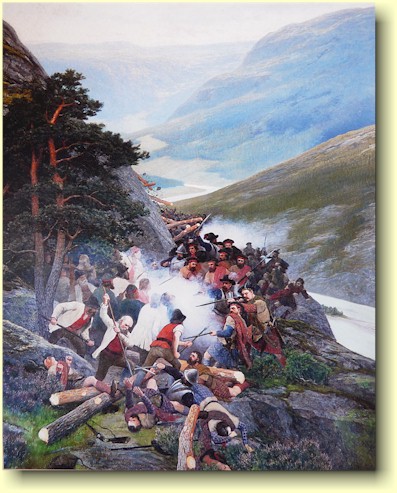
Kringen
Georg Strømdals (1856-1914) maleri fra 1897 |
|
|
|
According to
the same newspaper-cutting from GD, the then
“forbundskansler Helmut Kohl, was the Museum’s and
exhibition’s Patron”.
After the
exhibition the museum in Berlin requested permission to
publish a reproduction of the painting on their new
Internet pages.
(The Internet was a relatively new medium in 1998) |
|
| |
|
|
|
| |
(Letter from)
Deutsches Historisches Museum ...
Dear Mr Selfors;
The German Historical Museum has
recently acquired the capacity to publish via the
Internet, including our recent exhibition,
Myths of Nations. A European
Panorama.
In this form it is possible to get
both a detailed and a broad overview of the exhibition.
I was thinking of only publishing the most
imortant (sic)
works and the general introduction.
Therefore, I would like to include the following
painting in our internet catalogue:
Georg Nilsen Strømdal: Slaget ved Kringen
(the Battle of Kringen).
I would like to ask you to give me permission
to reproduce the image over the internet.
The replications would be scanned from the exhibition
catalogue.
Thanks very much in advance for all your help.
Yours sincerely,
(Sign.)
i.A. Claudia Wenhardt
Dr. Monica Flacke
Exhibition Management
|
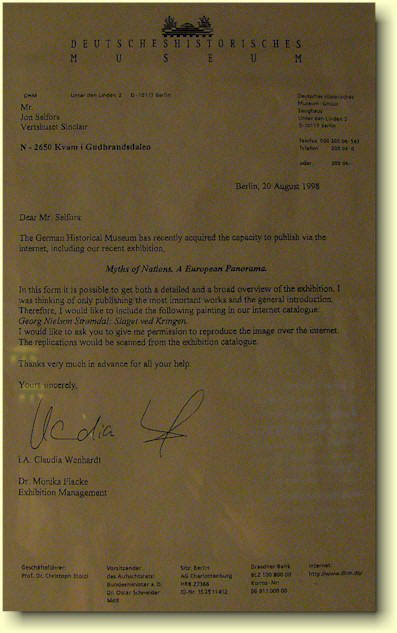
Click to get a larger version of the letter. |
|
| |
|
|
|
|
Text
taken from the
Berlin museum’s Internet page (English version): |
|
|
|
|
|
|
|
|
|
The Battle of Kringen, 1612
"The Battle of Kringen in 1612 was basically an
episode of little consequence during the Kalmar War
(1611-1613) between Denmark and Sweden. Norway,
which was a province of Denmark, was drawn into the
war when the Danish king, Christian IV, demanded
that the Norwegians supply an army of 8,000
peasants. Mass desertions began as soon as the
troops began to assemble. The reason the peasants
deserted, according to 19th century historians, was
their love of freedom and attachment to their native
land, which they placed above their loyalty to the
crown. It was not until an army of some 900
(the correct number was
300-350)
Scottish farm labourers serving for
the Swedish king landed on the Norwegian coast on
their way to Sweden that the Norwegians took up arms
and defeated the invaders near Kringen in the
Gudbrandsdal valley.
The memory of this victory – and thus of their
contribution to the Danish triumph over the Swedes –
enhanced the Norwegians' national pride in the 19th
century. An important part of this tradition is the
idealisation of the Norwegian peasants, their
courage, their cleverness in fighting and above all
their love of freedom. Hand in hand with this image
was the glorification of the Norwegian mountains as
the home of an intensely freedom-loving, proud and
daring people. So the pictures of the event are as
much a monument to the mountainous landscape as they
are to the battle itself ..."
|
|
|
|
|
|
|
|
|
Kjell Fjerdingren |
|
|
| |
(Coming later) |
|
| |
|
|
|
|
Lady Sinclair |
|
|
| |
(Coming later) |
|
| |
|
|
|
|
Man on the horse
(Storøya) |
|
|
| |
(Coming later) |
|
|
|
|
|
|
| |
|
|
| |
|
|
| |
What
happened to the surviving Scots? |
|
| |
|
|
|
|
|
|
|
|
Governor
Kruse writes a little in his report about the 18
Scots who were brought to Akershus (Castle). He sends
the three most distinguished (the officers) to
Copenhagen. |
|
|
|
|
|
|
|
|
“ with regard to the remaining 15, some of them
immediately took work with the good people here (in
Norway) and some who as volunteers, will enter the
service of the King in Jøgenn Lungis’ regiment, I
sent immediately to
Elfsborg”
(somewhat freely translated from Governor
Kruse’s report to the Danish Chancellor).
Photo of
the report - Krag’s copy-->
|
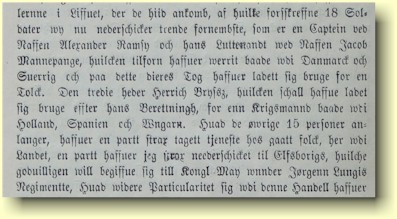 |
|
|
|
There is
however a large number of stories about Scots who
survived - and who, for shorter or longer periods,
remained in Gudbrandsdalen and other places in Norway.
It is claimed that several of them were the originators
of new family trees surviving in Norway today.
If these accounts are to be accorded credibility (?),
there were several survivors from this confrontation. |
|
| |
|
|
|
|
|
|
|
|
|
|
|
|
|
The Scot at Gjerstad
Gjerstad
historielag (Gjerstad Historical
Society) will in the Spring (2006) erect
a monument at the grave of a Scottish
mercenary soldier, according to
NRK-Sørlandet.
“The soldier came to Gjerstad after
fleeing from the historic battle at
Kringen in Gudbrandsdalen in 1612.
This is the battle which created the
story about Pillarguri.
The soldier’s grave in Gjerstad has
been unknown to most people.
But the Historical Society wants to
have a fitting monument to
Sinclair’s soldiers, says Olav
Vevstad in Gjerstad Historical
Society”.
NRK Sørlandet
Gjerstad kommune is close to
Risør ->
|
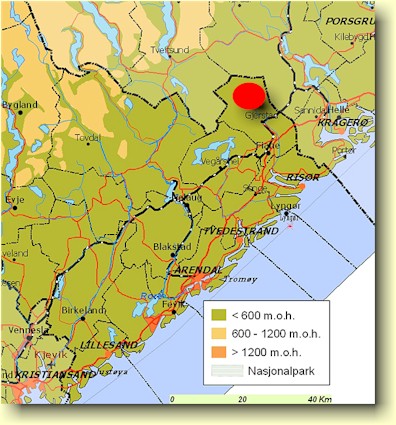 |
|
|
|
|
|
|
|
|
“The soldier
who was killed in Digerdal was one of two who came to
Telemark after the majority of the soldiers under the
command of the Scots Captain Sinclair had been killed by
farmers in Gudbrandsdalen in 1612. ...
While the one soldier fell in love with a girl from Bø,
the other wanted to return to Scotland.
He made his way towards a port in Sørlandet, but never
reached there.
He was found dead in the snow in Digerdal. He was buried
in Digerdal and the grave marked with a round stone at
each end.
For those who wish to visit the grave, the way is marked
from the main road to Digerdal”.
(Thanks go to Gjerstad Historical Society for the loan
of the photograph and text.) |
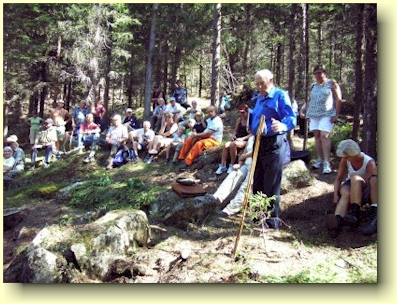
From
the unveiling of the commemorative tablet in
August 2006. In co-operation with Statskog, Gjerstad
Historical Society has ensured proper marking
of the old grave. |
|
| |
|
|
|
|
|
|
|
|
|
The Scot
who was saved by Ingebrigt Valde
Krag writes (p.28):
“The saga tells that One of the surviving Scots,
when he saw the Rifle pointed at him, ran to
Ingebrigt Valde from Vaage*)
and with Beseeching Gestures, begged for his Life
and Rescue and sought Shelter under his Horse,
whereupon Ingebrigt raised his Axe in his Protection
with the Threat that he would cut down whoever
killed him. This Scot was reportedly a Master glass
worker and later settled in
the Country and to Prove his Gratitude sent several
Windows to Ingebrigt Valde, whom in his Letters he
always referred to as his “Lifefather”. Of these
same Windows, one is still shown on Valde, in
which some decorations with etched work on a Rough
Shape, which represents a Shield, on which can be
seen a Mark like a Signet (perhaps Ingebrigt Valde’s)
and an Angel which seems to hold its hands in a
protective manner over it”.
*)
Hjorthøy calls him Ingebrikt Sørvold; in Grams
Mandtal (Grams Census) neither this name or
Ingebrikt Valdes is to be found, on the other hand
the tenant farmers Oluff and Knud Valde are both
named.
|
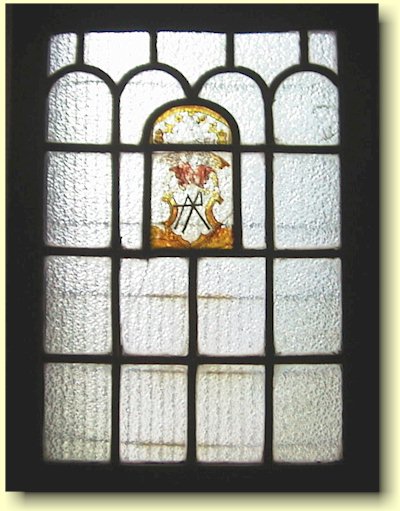
Thanks go to Ivar Teigum for the loan
of the photograph |
|
|
|
Where he
settled is not known, but the window is to be found
today in St. Edmund’s Church in Oslo. It was brought
there from Valle in the late 1800s
(Teigum2,
p.116) |
|
|
|
|
|
|
| |
|
|
|
|
|
|
|
|
|
The farm
Skottelien in Vågå
This farm
was reportedly “first cleared by one of the remaining
Scots and thereafter given the name Skottelien”
(Lassen p.16) |
|
|
|
|
|
|
|
| |
|
|
|
|
The farm
Skotte in Sel
“Called this
because it was cleared by one of the Scottish prisoners
who stayed (in the country)”
(Lassen
p.18) |
|
|
|
|
|
|
|
| |
|
|
|
|
|
|
|
|
|
|
|
|
|
|
|
|
|
| |
|
|
|
|
|
|
|
|
|
|
|
|
| |
(More about this later) |
|
| |
|
|
|
|
| |
|
|
| |
|
|
|
Background - The
Battle - Myths?
- Significance - Objects - Literature - Scotland
-
Programme2012 |
| |
|
|
| |
|
|
|
| |
|
|
|
|
|
|
|
|
|
| |
Skottetogsidene ble lagt ut på nettet 12. november 2010.
Denne siden ble sist oppdatert:
08. april 2012
Web:
Geir Neverdal (lektor/cand.philol) - Sel Historielag
www.otta2000.com
|
|
| |
|
|
|
|
|
|
|
|
|
| |
|
|
|
|
|
|
|
|
|











